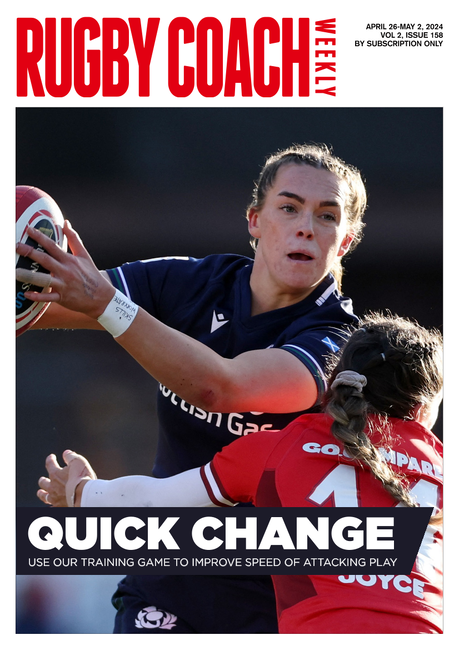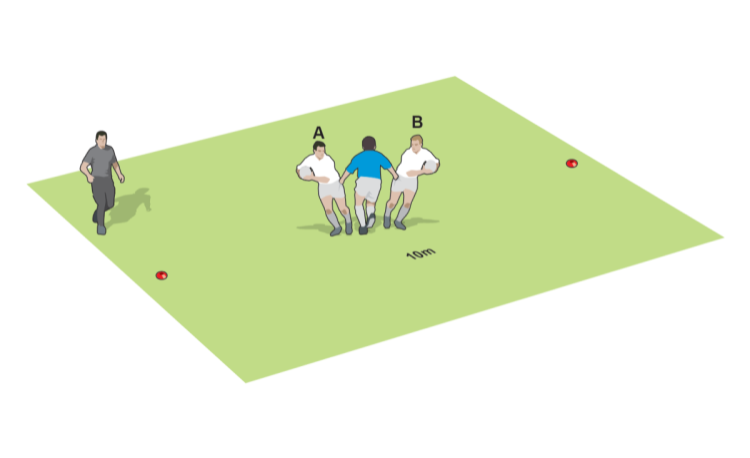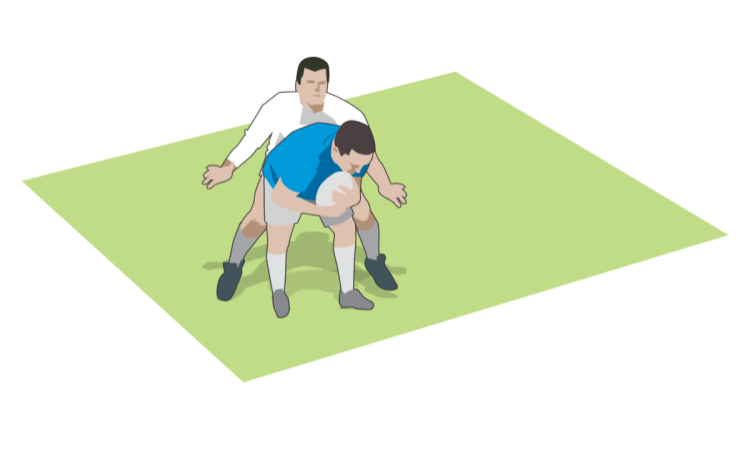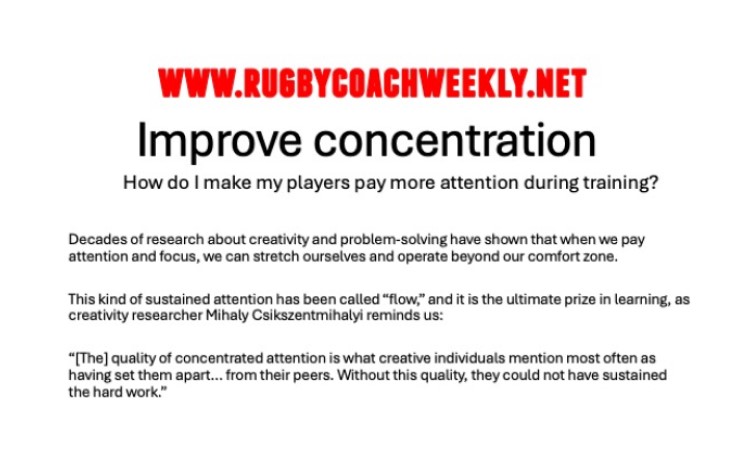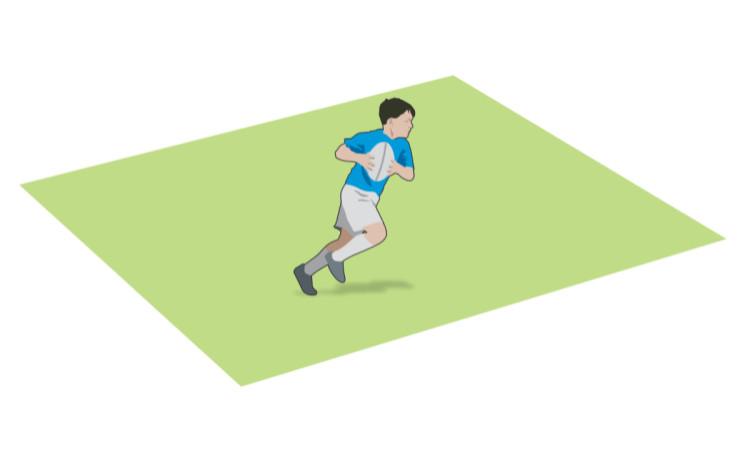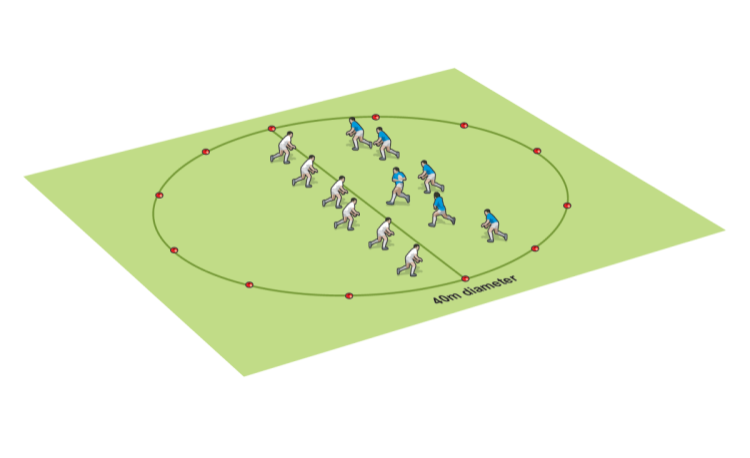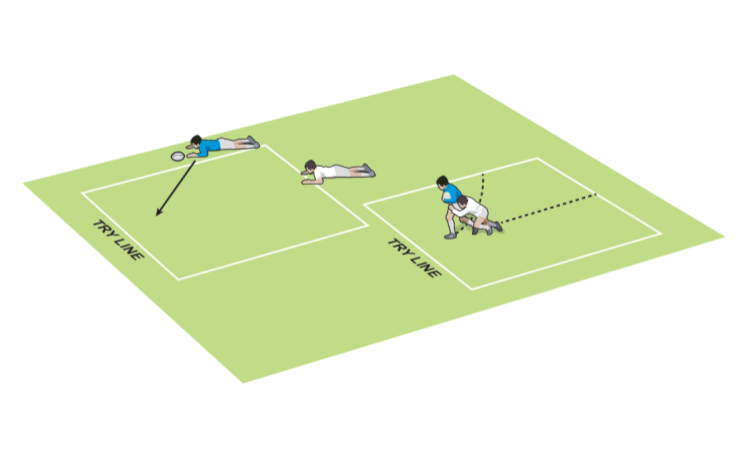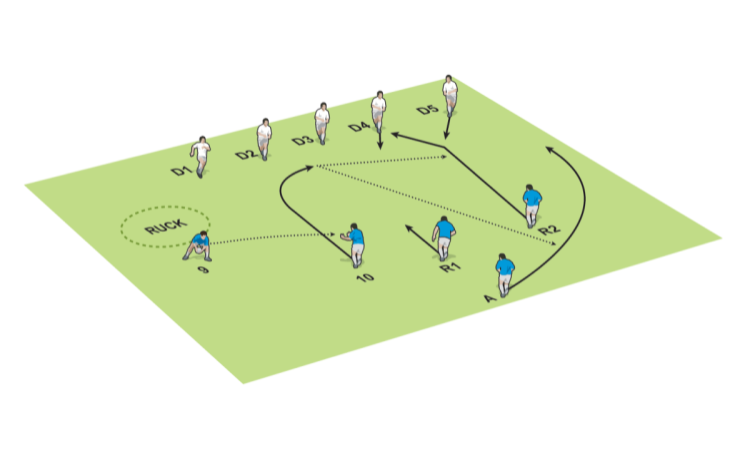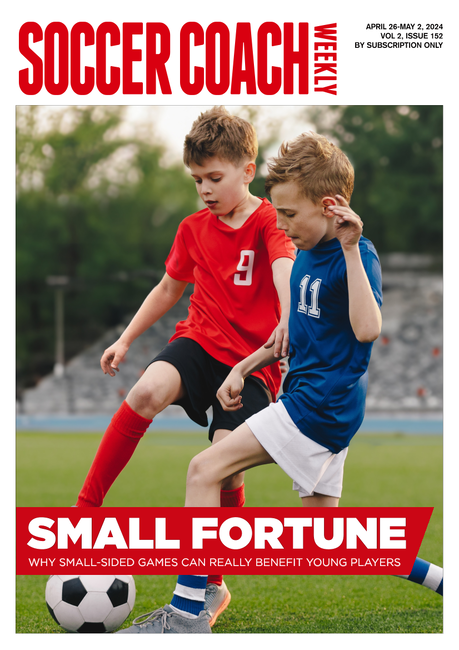You are viewing
1 of your 2 free articles
Quick Coach: Fend and pass
CORE SKILLS
- Footwork
- Fend
- Contact
- Handling
- Continuity
THE STORY
“The ball carrier uses a strong fend to create space and time to pass the ball to their supporting player while the defender aims to disrupt. They then turn the corner and repeat.”
SET UP
Three cones, 3m apart, one ball.
HOW TO PLAY
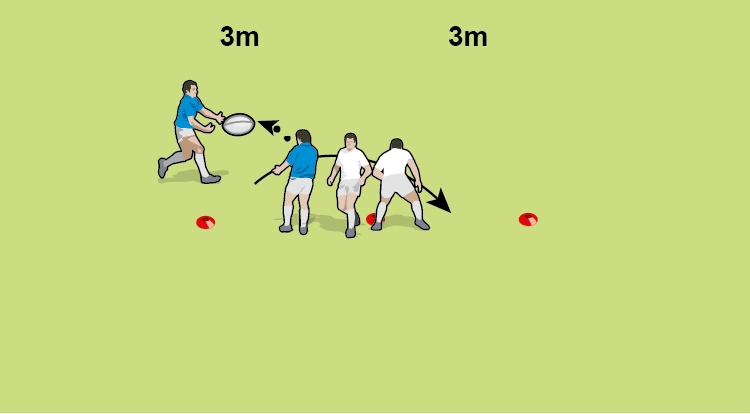
Put an attacker with a ball in the first space between the cones and another attack about 2m away. Put a defender next to the middle cone facing away from the ball carrier and another on the other side of the middle cone facing the oncoming attacker.
Have the ball carrier pass to the attacker who then goes around and through the gap.
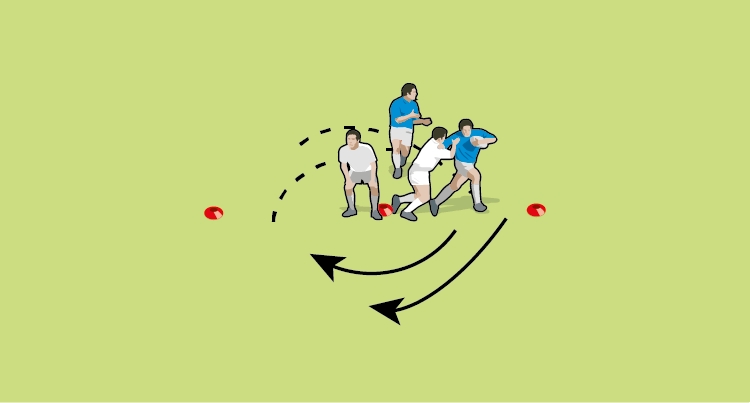
The defender can only move sideways and aims to grab the shirt of the attacker.
The attacker passes the ball if they are held or runs around to the next defender.
The attackers continue to go around twice, before they swap roles.
Once both groups have gone “clockwise”, they then run anti-clockwise.
Have a spare ball at the ready to throw to the attackers if they drop the ball or it goes forward.
Count the successful attempts.
DEVELOPMENTS
-
Make the tacklers more active, so they come forward.
NUMBERS
With five, have three defenders and make the area into a triangle shape. With six, make the area into a square.
Related Files
Newsletter Sign Up
Coaches Testimonials

Gerald Kearney, Downtown Las Vegas Soccer Club

Paul Butler, Florida, USA

Rick Shields, Springboro, USA

Tony Green, Pierrefonds Titans, Quebec, Canada
Subscribe Today
Be a more effective, more successful rugby coach
In a recent survey 89% of subscribers said Rugby Coach Weekly makes them more confident, 91% said Rugby Coach Weekly makes them a more effective coach and 93% said Rugby Coach Weekly makes them more inspired.
Get Weekly Inspiration
All the latest techniques and approaches
Rugby Coach Weekly offers proven and easy to use rugby drills, coaching sessions, practice plans, small-sided games, warm-ups, training tips and advice.
We've been at the cutting edge of rugby coaching since we launched in 2005, creating resources for the grassroots youth coach, following best practice from around the world and insights from the professional game.


